Le padel is a mix between tennis and squash. However, the physiological demands of racquet sports are not yet sufficiently analyzed. And especially those of padel.
Focus on the physical and physiological requirements necessary for padel which will make it possible to suggest the training and evaluation orientations of the players of padel future years.
- Subjects
These are ten amateur paddle players playing at least twice a week (approximately 2 hours of play per week), all of them right-handed men. They are aged 6 to 21 years old.
- Average age = 34,6 ± 7,99 years
- Size = 1,81 ± 0,11 m
- Weight = 78,1 ± 27,49 kg
- BMI = 23,89 ± 1,92 kg / m²
These 10 players voluntarily participated in this study. Before participating, they read and signed an informed consent for this purpose.
- Instruments
The study was carried out on 16 games, always on the same day of the week (namely Saturday) and always around the same hours (start of the games around 15 p.m.) so that the influence of circadian rhythms on the variables of the study is always the same (Atkinson and Reilly, 1996).
Indeed, on the physiological level a certain number of functions which have an influence on sports performance evolve according to a circadian rhythmicity. Thus, certain central (heart rate, oxygen consumption, ventilation) or peripheral (musculo-articular flexibility, muscular strength) factors undergo variations during the course of a day. The best performances are generally recorded in the afternoon (between 15 p.m. and 18 p.m.). It therefore seemed to me wise to carry out the measurements during matches made between the middle and the end of the afternoon. Especially since the peak of adrenaline secretion (stimulating hormone) is during the afternoon.
The players always played with the same pair. Each match was played in 2 winning sets. Each player played with their own racquet, which is usually used. All balls were identical (of the brand Head padel).
- Global positioning system (GPS)
The distance traveled and the speed of movement were recorded via Suunto Ambit3 Peak GPS watches attached to players' wrists. To be able to record the signal, the matches were played on grounds outside the Padel Bailly Noisy Tennis Club.
- Heart rate (HR)
Using the heart rate monitor of Suunto Ambit3 Peak watches, heart rate values were recorded every second. These values have been classified into six categories that correspond to percentages of maximum heart rate:
FC1 (<50%), FC2 (50-70%), FC3 (70-80%), FC4 (80-90%), FC5 (90-100%) and FC6 (100-120%)
- Assessment of perceived effort
The measurement of the perceived effort was made using the Borg scale during the minute following the end of the match.
The Borg scale or the measure of effort perception (RPE) is a quantitative measure of the perception of effort during physical exercise, introduced around 1970 by Professor Gunnar Borg. The measure is a rating on a scale of 0 to 10 attached to different words of appreciation: effort "very light, difficult, painful ...". This global measure, based on the person's physical and mental sensations, takes into account physical condition, environmental conditions and the level of general fatigue.
It is widely used in sports training to assess the intensity of an exercise or competition and to deduct the training load. If the measurement is subjective, it has been shown to be correlated with many physiological parameters: heart rate, accumulation of blood lactate, ventilatory threshold, etc.
- Lactate level
It was measured using the “Lactate Pro 2” lactate meter from Praxisdienst. 0,3 µl of blood sample was taken from players' fingers at the end of each match. The measurement was carried out by a registered nurse.
In addition to the measurement of the heart rate, the measurement of lactate is frequently used in sports preparation. Since lactate is a good indicator of aerobic or anaerobic metabolism in muscle, the value of lactate can be used to determine if the training load is appropriate for the athlete.
3. Results
Table of data analyzed during the study :
| Distance per match | (M) | 2127 | ± 589 |
| Duration of matches | (S) | 3250 | ± 532 |
| Average speed | (km / h) | 2,39 | ± 0,20 |
| Maximum speed | (km / h) | 14,8 | ± 1,21 |
| Average HR | (beats / min) | 139 | ± 9,68 |
| Max HR | (beats / min) | 189 | ± 7,3 |
| FC1 | (<50% Fc max) | 0,37 | ± 1,4 |
| FC2 | (50-70%) | 24,21 | ± 18,52 |
| FC3 | (70-80%) | 39,12 | ± 20,28 |
| FC4 | (80-90%) | 29,72 | ± 15,20 |
| FC5 | (90-100%) | 6,43 | ± 11,87 |
| FC6 | (100-120%) | 0,15 | ± 0,29 |
| lactate | (mmol / l) | 3,08 | ± 1,69 |
| Borg10 | (points) | 5,12 | ± 1,92 |
In this table, we note that the distance traveled on average per match by the players is 2,1 km. The duration of the matches was 54 min.
In terms of speed, on average it was 2,39 km / h with an average top speed of 14,8 km / h. Heart rate averages 139 beats per minute. Over 50% of the heart rates seen by players during a game are within <80% of their maximum heart rate.
The lactate, measured at the end of the match, is 3,08 mmol / L on average. Similarly, the perceived effort measured through the Borg scale is 5,12 points. This corresponds to an activity considered to be hard.
Table showing the percentage of the average distance covered during a match of padel depending on speed :
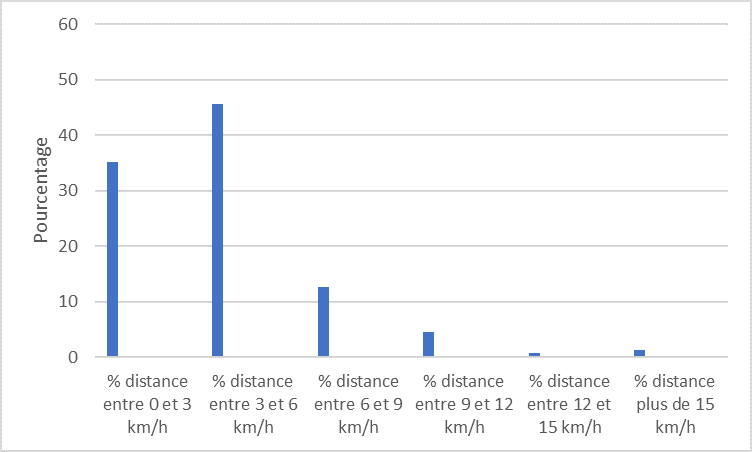
In this table we see that of the total distance traveled, about 81% are achieved at a speed less than 6 km / h. In comparison, only 2% of the total distance traveled is achieved at high speed (> 12km / h).
Table showing the percentage of average time spent in a match padel depending on the speed:
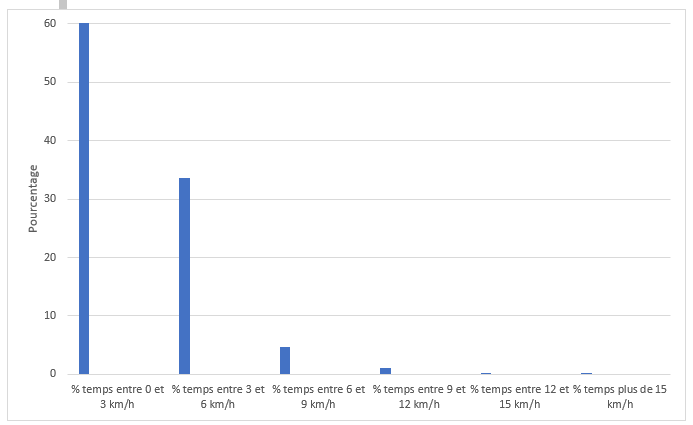
This table shows us that more than 90% of the playing time is spent at less than 6km / h by the players during a match. Time spent at high speed (> 15km / h) represents 0,01% of total playing time.

Matthieu Lebourgeois is a sports physiotherapist and physical trainer. He takes care of players of padel lover of re-athletic rehabilitation and practices padel regularly at leisure on padel. Matthieu fully intends to test himself in competition and show his talent!
















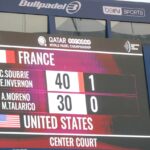





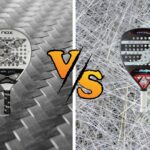














































































 Premier Padel Brussels P2 – Mike Yanguas and Javi Garrido once again take the advantage over Stupa / Di Nenno
Premier Padel Brussels P2 – Mike Yanguas and Javi Garrido once again take the advantage over Stupa / Di Nenno Premier Padel Brussels P2 – The women’s Big 4 at the semi-finals!
Premier Padel Brussels P2 – The women’s Big 4 at the semi-finals! Premier Padel Brussels P2 – Sanz and Nieto win a big fight against Lebron / Navarro!
Premier Padel Brussels P2 – Sanz and Nieto win a big fight against Lebron / Navarro! Guillaume Codron de Sud Padel : “A family project”
Guillaume Codron de Sud Padel : “A family project” Nallé Grinda: “Democratize the padel in the USA with PadelX "
Nallé Grinda: “Democratize the padel in the USA with PadelX " Simon Boissé: “We know that there are two nations in front of us”
Simon Boissé: “We know that there are two nations in front of us” Marie Maligo: “This period of frequent changes of partners was beneficial for me”
Marie Maligo: “This period of frequent changes of partners was beneficial for me” Gilles Moretton: “We will be able to put the padel at the level of tennis”
Gilles Moretton: “We will be able to put the padel at the level of tennis” Two P1000 doubled prize money approaching!
Two P1000 doubled prize money approaching! José Manuel Escin at the inauguration of Casa Padel DOS: “Finally, and thank you!”
José Manuel Escin at the inauguration of Casa Padel DOS: “Finally, and thank you!” Miguel Lamperti: three tie-breaks and a return to the quarter-finals!
Miguel Lamperti: three tie-breaks and a return to the quarter-finals!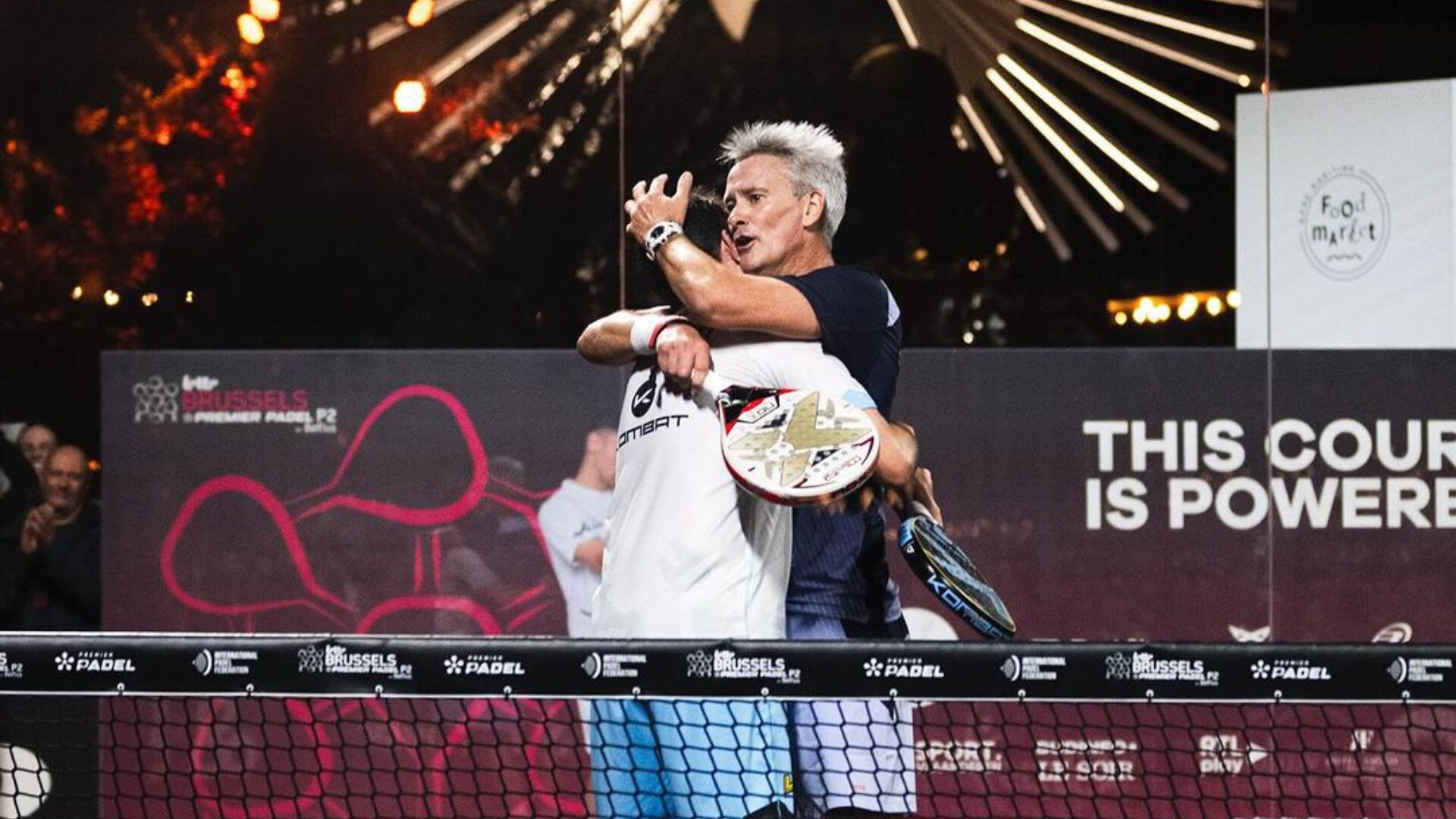 Big evening in Brussels with two seeded players on the mat, heckled number 1s…
Big evening in Brussels with two seeded players on the mat, heckled number 1s… A1 Padel – the French Open replaces the Mexican Open on the calendar
A1 Padel – the French Open replaces the Mexican Open on the calendar Padel Score comes to Tahiti for American Express Padel Cup!
Padel Score comes to Tahiti for American Express Padel Cup! Do you know the Rafa Nadal Academy Tour?
Do you know the Rafa Nadal Academy Tour? Play at padel on his yacht? Possible for €233.000!
Play at padel on his yacht? Possible for €233.000! Our Top 10 training courses padel in France and Europe
Our Top 10 training courses padel in France and Europe At the heart of padel – Episode 25: Paul and Andoni answer your questions
At the heart of padel – Episode 25: Paul and Andoni answer your questions Tactical padel – What to do when faced with players who systematically stay at the bottom?
Tactical padel – What to do when faced with players who systematically stay at the bottom? The basic tactics of padel
The basic tactics of padel At the heart of padel – Episode 25: Paul and Andoni answer your questions
At the heart of padel – Episode 25: Paul and Andoni answer your questions At the heart of padel – Episode 23: defend the window well
At the heart of padel – Episode 23: defend the window well Prohibition on playing topless Padel : the reasons
Prohibition on playing topless Padel : the reasons FIP Tour – Going far from Europe, THE strategy to earn points!
FIP Tour – Going far from Europe, THE strategy to earn points! What is a good football player? padel ?
What is a good football player? padel ? “Lefties give me headaches when I play against them!”
“Lefties give me headaches when I play against them!” At the heart of padel – Episode 14: how to earn points in winter?
At the heart of padel – Episode 14: how to earn points in winter? A par 4 is always a winner...even if you manage to defend it!
A par 4 is always a winner...even if you manage to defend it! Carbon fiber VS fiberglass: what to choose?
Carbon fiber VS fiberglass: what to choose? How to effectively test a racket padel ?
How to effectively test a racket padel ? La padel to fight Parkinson's disease
La padel to fight Parkinson's disease Don't play with a cracked or broken racket, your body will thank you!
Don't play with a cracked or broken racket, your body will thank you! Michel Cymes: “The padel, physically, it’s serious!”
Michel Cymes: “The padel, physically, it’s serious!” Jeremy Gala: “Promote the padel among young people in Belgium remains a challenge”
Jeremy Gala: “Promote the padel among young people in Belgium remains a challenge” The French Touch Academy organizes its selection day Padel-Study
The French Touch Academy organizes its selection day Padel-Study Report on the detection and training of younger generations
Report on the detection and training of younger generations